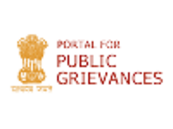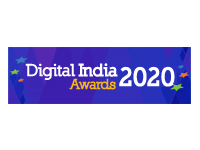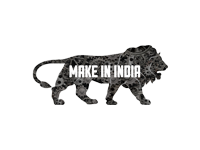VAPIS CENTRE at NCL, Pune
The Value-added Patent Information Services Centre in Chemical Sciences was inaugurated at NCL by Dr. R.A. Mashelkar, DGSIR, on 25 October, 1996. Dr. P. Ganguli, Manager, Special Project, Corporate Planning, Hindustan Lever, Mumbai, delivered the keynote address on Patents - Their Impact on the Research Process.
The introductory remarks were made by Dr. S. Krishnan, Head, SMIS Unit, NCL. Welcoming the participants, Dr. Paul Ratnasamy, Director, NCL, said that it was not adequate for an information service to obtain patent copies for its clients; it should also add to the value of the information available in the patents by providing additional information such as new technologies, business opportunities, and competitive intelligence. Such a package containing an exhaustive information on all the relevant aspects would be great use to the user enabling him to take vital decisions like investment. Referring to the NISSAT-sponsored information centre in operation at NCL, he said that it is one of the very few centres in India that provide user-oriented information to clients in industry.
In his inaugural address, Dr. R. A. Mashelkar, said that the idea of establishing a centre was conceived about two years earlier, when a lot of concern was felt about the inadequate awareness of the importance of patenting prevailing in the country. Industry, then, made scanty use of the patents, and did not regard them as an invaluable source of information. Concern was also felt about the reluctance among the scientists and industrialists to recognize the rights over intellectual property. Some controversial issues connected with IPR still continued to exist, he said.
Out of these concerns arose the concept of treating patents as a source of information, whose value could be increased from inputs from various other sources. Value addition to patent information involved understanding the contents of the patents, and adding to them the details of technology gaps, and other items of crucial information. This became essential in a climate in which creativity and innovation played very critical roles; in fact, creativity had by then become the key ingredient of successful competitiveness.
It is also necessary to scrutinize and screen patents periodically to separate the really valuable ones from those that have outlived their usefulness. This is necessary because it costs a substantial amount of money to keep patents alive. In fact, such a scrutiny is as important as generating knowledge and patenting it Dr. Mashelkar added.
Dr. Ganguli began his address by pointing out that innovative half-life of information keeps on coming down, and this makes it necessary to make profits as quickly as possible. The unique feature of a patent is that it affords the owner only a qualitative right to use the invention. In other words, he is often required to own other patents as well if he is to make the finished product. In modern thinking, a patent is equated with property in terms of legal rights.
He then went on to the issues that remain to be resolved in the patenting system. These concern patenting of living forms, research exemption, public disclosure of patented information, research record maintenance, patenting of generic drugs, protecting software, information security, contracts, IPR audit, among other matters. Elaborating the need for IPR audit, he said that the commercial value of the patents have to be periodically evaluated and the patents found wanting in it terminated, as it costs upto one million pounds to keep the patent alive.
Researchers can make use of patented knowledge provided the benefit they derive from it is not commercial. But it is not easy to predict the commercial value of the patent. Pure research is exempt from patent infringement penalties, but it is again difficult to define the word 'pure'. Patents have been obtained in recent years on research tools. The issue connected with this is whether such patented tools can be used in competitive research.
In the USA, patenting and invention first doesn't confer on the inventor the right to benefit from the invention. 'The first-to-invent' requirement should be fulfilled that is, the patent applicant has to establish that he is the first person to make the invention in connection with this the maintenance of research record is very important, as only a scrutiny of this can establish an inventor's claim that he or she is the first to make the invention. Another issue is the definition of what constitutes a trade secret. The rule here is that unless an inventor succeeds in having his invention or part of it classified as confidential, it cannot be considered a trade secret.
Some of the questions that need to be answered before a patent on a biotechnological invention is granted are : Has the usefulness of the invention been established? Have the benefits been adequately demonstrated ? Have the effectiveness of the new drugs in humans been demonstrated? Are there clear guidelines as to the confidentiality of the information?
Dr. R.A. Mashelkar, DGSIR engaged in a discussion [Photograph]
An area that is as full of uncertainties as biotechnology is software. Here, a new software can be either patented or copyrighted. The crucial question is whether a software is to be protected by patenting it or by copyrighting it. So far about 3,500 patents have been granted for software in the USA. As regards copyright, again, the interpretations of the rules and terms is different in different countries.
He drew attention to the curious fact that sometimes licensing a patent brings in more money than making and selling the product based on the patent.
Dr. Ganguli finally dealt with the components of the value addition i.e. research data/current awareness, analysis / monitoring, forecasting and decision making.
Mr. V.G. Deodhar of the SMIS Unit, NCL, proposed a vote of thanks.
VAPIS CENTRE at NICMAP, CMTI, Bangalore
The Value-added Patent Information Service (VAPIS) Centre was inaugurated by Dr R.A. Mashelkar at the National Information Centre for Machine Tools and Production Engineering, Central Manufacturing Technology Institute, Bangalore, on July, 1996. About a hundred representatives from various industries, R&D organizations, academic institutions and from CMTI attended the programme and also witnessed the demonstration of patent search arranged during the occasion. This VAPIS Centre is set up with the assistance of NISSAT, DSIR.
Welcoming the Chief Guest and other audience, Mr. S. Vasantha Kumar, Director, CMTI, briefed about the function of NICMAP and facilities available. He emphasized the need for patent information services to the industries and said that this VAPIS Centre will procure databases of patents available on CD-ROM in the area of engineering to provide information on patents published/filed all over the world.
Dr. R.A. Mashelkar, DGSIR inaugurated the VAPIS by lighting the lamp and delivered the inaugural address. In his inaugural address, Dr. Mashelkar appreciated the image CMTI has built and the collaboration it has with industries by virtue of which it has a self financing capability covering upto 80% of the non-plan budget. He also appraised the excellent services rendered by NICMAP ever since its establishment by NISSAT in CMTI way back in 1977.
He elaborated on the concept of Value Added Patent Information Services and what could be expected from the Centre. The situations that make the patent information vital were explained. Dr Mashelkar said that unless a value is added to a product in terms of quality, the product will not be sold in the market. The fierce competition faced by Indian industries, the necessity of the awareness of competitive innovations and the availability of foreign technology have made the patent information vital for the industry. He said that the innovations have to be protected to have a value. Dr Mashelkar also mentioned about the poor awareness in the country regarding patents. He said that we are not even aware of what our competitors are doing. He explained that the addition of value to patent information is made by analyzing contents of the patents.
Dr. R.A. Mashelkar inaugurating the Value-added Patent Information Service
at NICMAP, CMTI, Bangalore [Photograph]
He said that the patent information will provide an understanding of the trends in technology, help to predict future developments and avoid duplication in R & D. It also helps to know potential competitors and their work to avoid the infringement of intellectual property rights. The first VAPIS centre is functioning at NCL, Pune and the chemical industry is benefited from it. Engineering industry also needs such an information centre and CMTI is the choice of NISSAT for establishing such a centre. The Department of Industrial Promotion and Policy has also agreed to participate in the programme. The functions of the VAPIS will be
- to provide full text of patents;
- use patent literature to provide information products and services;
- to develop training and teaching programmes concerned with patents; and
- monitoring the patenting activity.
Dr. Mashelkar noted that while the first VAPIS Centre at NCL has expertise in the same organization, CMTI needs to pool in the knowledge-bases available in Bangalore to provide the service. Bangalore being the intellectual capital of India the networking of the knowledge-bases will be successful. He said that the time has come to take up forward engineering in the country rather than the current practice of reverse engineering. He concluded his talk by saying "this VAPIS centre will not only create awareness of power of patents but also enable to create global competition". He hoped that the information provided will be very useful to the user.
Dr. A. Lahiri, Advisor, DSIR, highlighted the activities of NISSAT on the patent information services. He emphasized the importance of patent information and the compilation of case studies to enable conduct training programmes. He insisted that this information service should be market oriented so that the knowledge is shared and the revenue brought in.
The inaugural function concluded with a Vote of Thanks by Mr B. Sudarshan, Senior Scientist, NICMAP, CMTI.





















